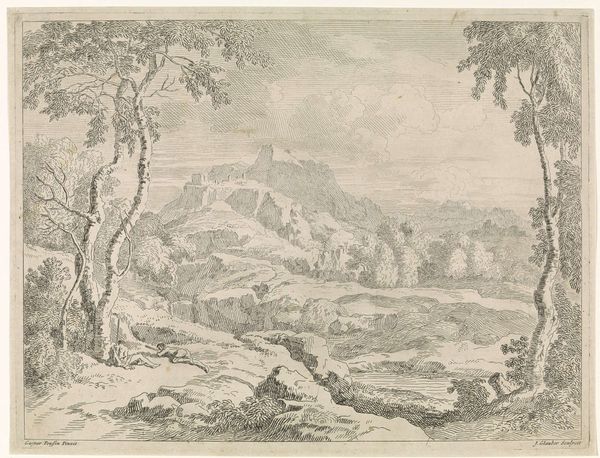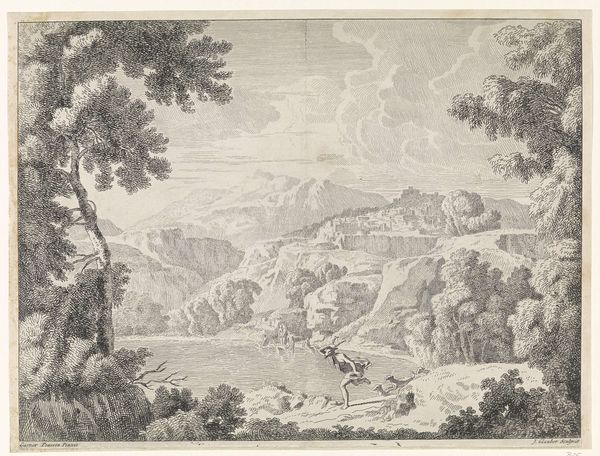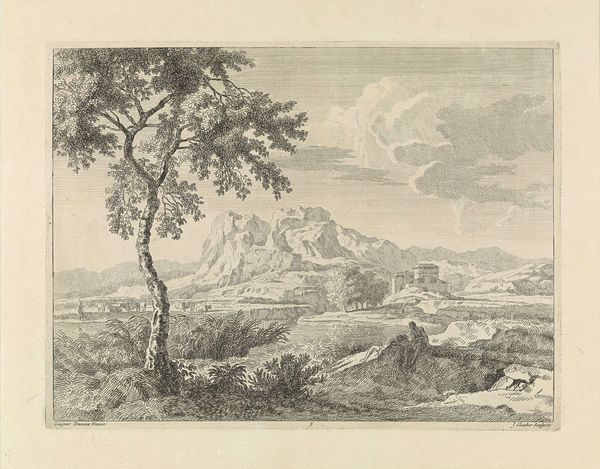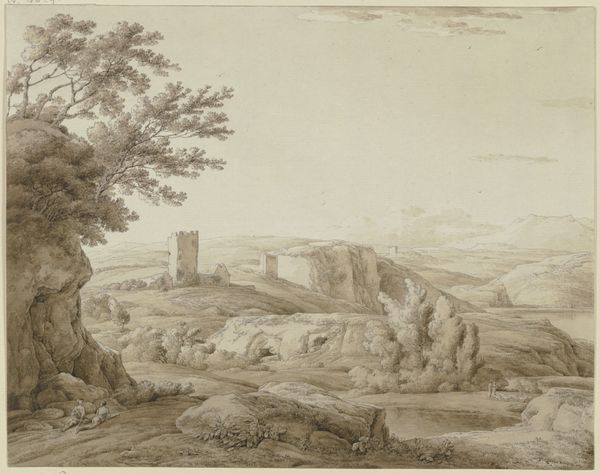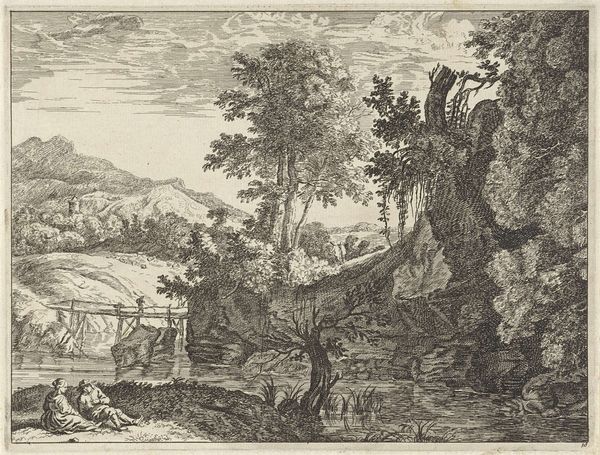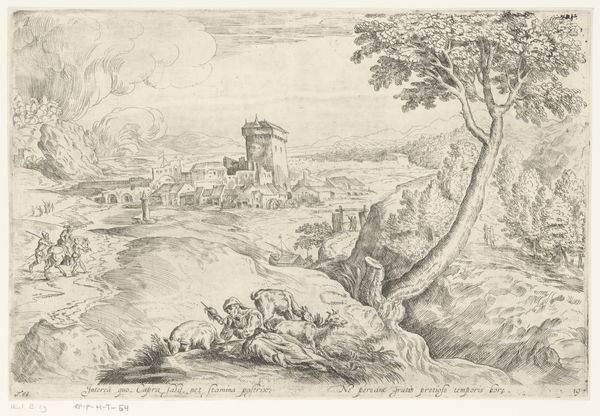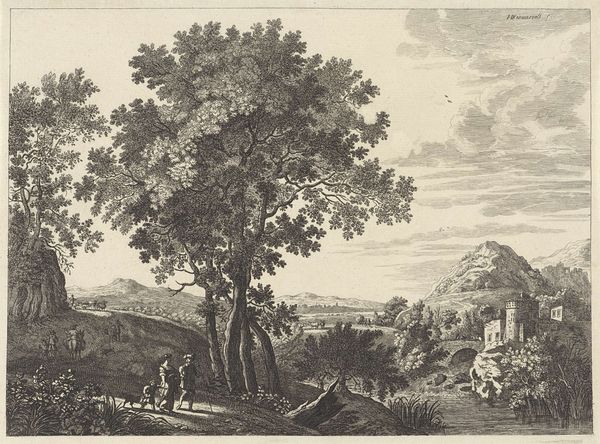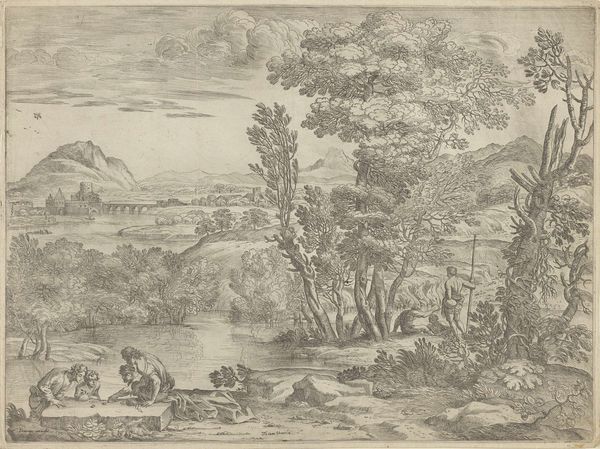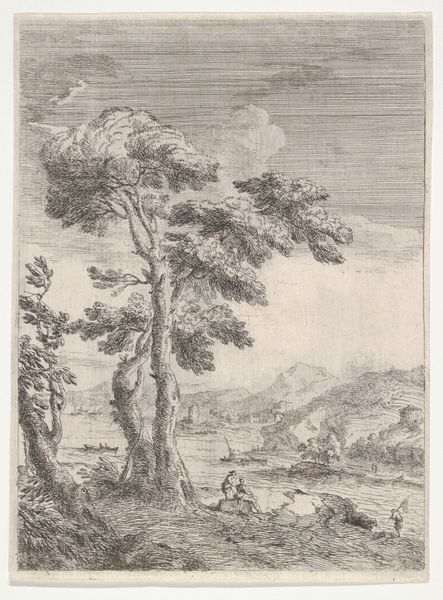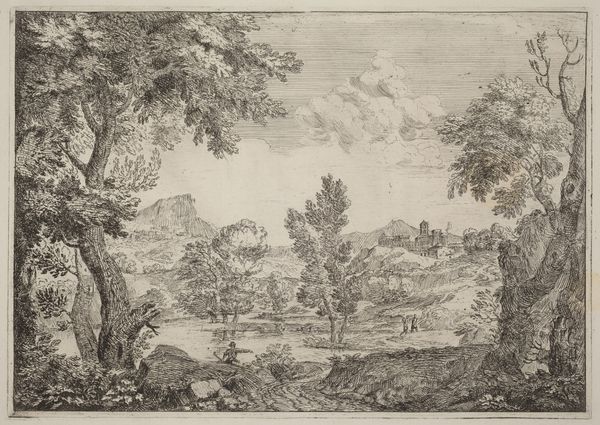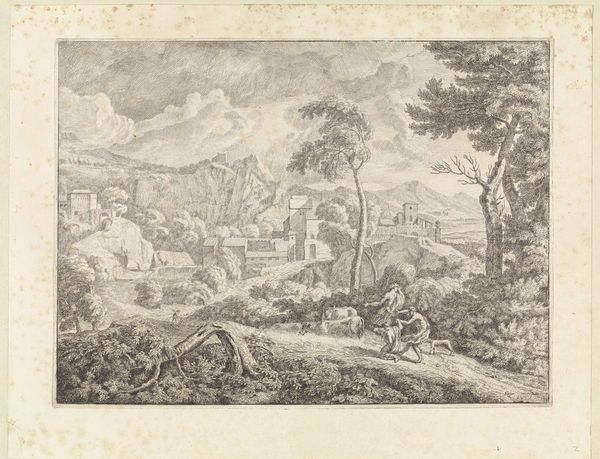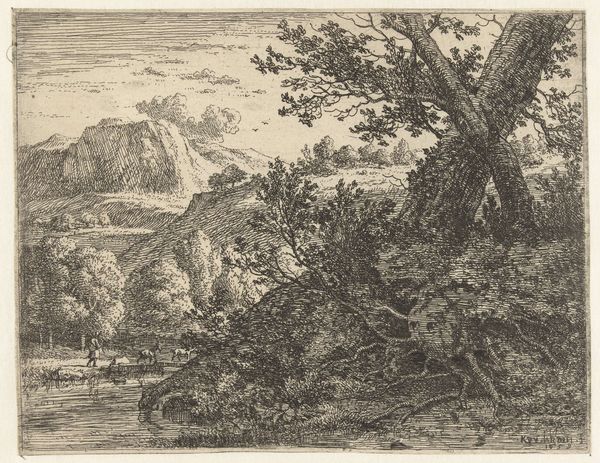
print, etching, engraving
#
baroque
# print
#
etching
#
landscape
#
waterfall
#
line
#
engraving
Dimensions: height 293 mm, width 389 mm
Copyright: Rijks Museum: Open Domain
Editor: Okay, so we’re looking at “Landschap met ravijn en waterval,” or "Landscape with ravine and waterfall," a print by Johannes Glauber, made sometime between 1656 and 1726, using etching and engraving. It feels…distant. Like a dream almost, with that meticulously rendered, almost theatrical landscape. What do you see in it? Curator: Oh, this grabs me. Immediately. It's an echo of echoes, really. Think about it: Glauber, deeply influenced by Italian landscapes but likely having never even seen some of these places himself! He's conjuring an idealized world, a 'classical' landscape filtered through countless other artists' imaginations, and then translating that through the rigid, exacting process of etching. Isn’t that wild? It's like he's writing poetry based on a translation of another poem, filled with yearning for a place that maybe never even existed! Do you sense that tension too? Editor: I think so, yeah! The etching style feels so precise, but the landscape is so romantic and… wild! It's definitely a contrast. Curator: Exactly! And it speaks to something deeper, I think. A desire for something just out of reach. It’s like that persistent whisper of an impossible Eden that haunts so much art of that time. Also, it sort of winks at you. These artists loved to create scenes with hidden symbolism or allusions. Does it make you feel as though there is a personal aspect? Editor: A personal aspect, because I suppose that it shows us that sometimes wanting for something can give us new perspectives and insights that transcend physical experience! Curator: Wonderful. Just the act of seeking can lead us toward newer visions!
Comments
No comments
Be the first to comment and join the conversation on the ultimate creative platform.
